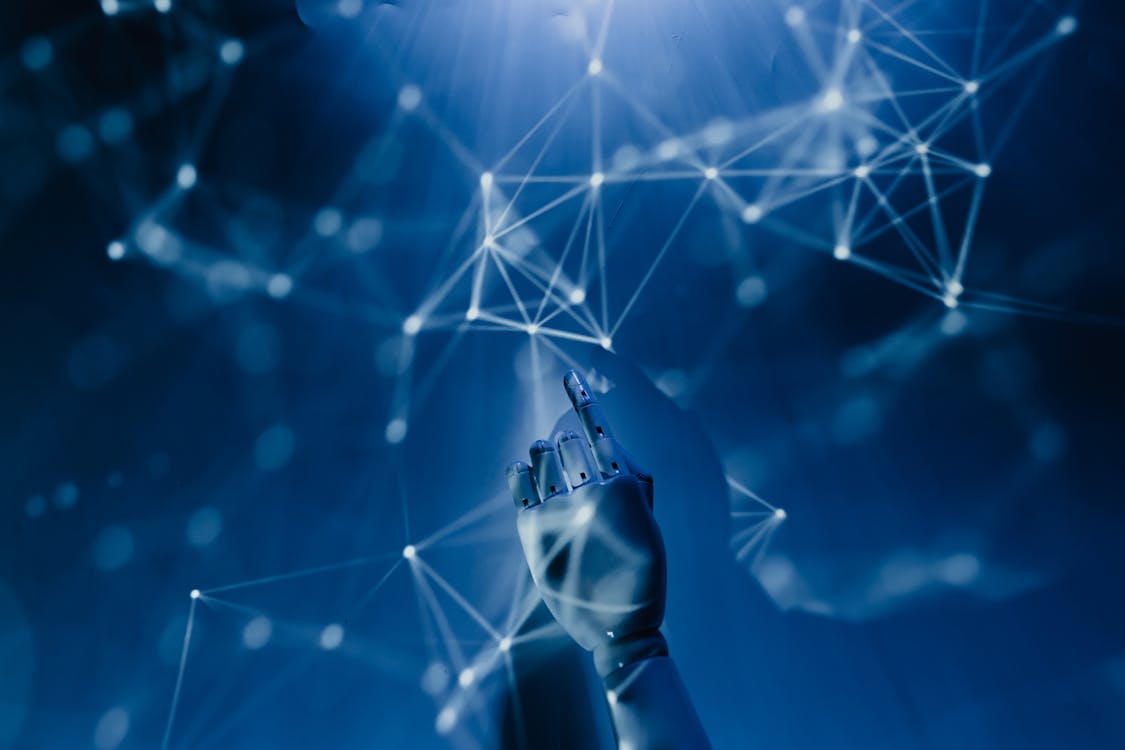 DOI : 10.17577/
DOI : 10.17577/In the world of finance, trading has always been a dynamic and ever-evolving field. From the days of open-outcry trading on bustling exchange floors to the digital age of online platforms, the landscape has undergone significant transformations. As we look ahead, it’s evident that the future of trading will be shaped by three key pillars: Artificial Intelligence (AI), Blockchain, and Information Technology (IT). In this blog post, we’ll explore how these technologies are reshaping the industry and what lies ahead.

The Rise of Artificial Intelligence in Trading
Artificial intelligence has been making significant inroads in various industries, and trading is no exception. AI’s ability to analyze vast amounts of data, recognize patterns, and make real-time decisions has positioned it as a game-changer in the world. If you’re interested in exploring the potential of AI in trading, you can start by conducting a thorough trading robot comparison here to find the best tools and strategies to optimize your trading endeavors.
Algorithmic Trading
Algorithmic trading, or algo, is one of the most prominent applications of AI. Algorithms powered by AI can execute trades with incredible speed and precision, far beyond what human traders can achieve. These algorithms can analyze market data, news, and social media sentiment in real-time to make split-second decisions. As a result, they are able to seize opportunities that human traders might otherwise miss.
Predictive Analytics
AI-driven predictive analytics is another area where technology is revolutionizing trading. Machine learning models can analyze historical market data and identify trends and potential future price movements. Traders can use these insights to make informed decisions about when to buy or sell assets.
Risk Management
Risk management is a critical aspect, and AI plays a vital role in this area. AI models can assess and manage risk by continuously monitoring market conditions and adjusting strategies accordingly. This helps traders minimize losses and maximize profits.

The Role of Blockchain in Trading
Blockchain technology, which gained fame as the foundation of cryptocurrencies like Bitcoin, has found applications beyond digital currencies. In trading, blockchain offers several advantages.
Transparency and Security
One of the key benefits of blockchain is its transparency and security. Every transaction on a blockchain is recorded in a tamper-proof ledger that is accessible to all participants in the network. This transparency reduces the risk of fraud and ensures that activities are conducted fairly.
Smart Contracts
Smart contracts, self-executing contracts with the terms of the agreement directly written into code—can automate various aspects of trading. They can facilitate trade settlements, automate dividend payments, and even enforce complex strategies. This automation reduces the need for intermediaries and lowers transaction costs.
Tokenization of Assets
Blockchain technology enables the tokenization of assets, which means representing real-world assets like real estate, stocks, and commodities as digital tokens on a blockchain. This makes it easier to trade and transfer ownership of these assets, opening up new possibilities for global trading.
Information Technology: The Backbone of Future Trading
Information Technology, while not as glamorous as AI or blockchain, is the backbone of modern trading. It provides the infrastructure and tools that enable the seamless integration of AI and blockchain into the ecosystem.
High-Frequency Trading
High-frequency trading (HFT) is a strategy that relies on ultra-fast execution and relies heavily on IT infrastructure. HFT firms invest heavily in cutting-edge hardware and software to gain a competitive edge. These systems can process vast amounts of data and execute trades in microseconds.
Trading Platforms
Online platforms have become the gateway for individual and institutional traders to access financial markets. These platforms rely on robust IT systems to provide real-time market data, execute trades, and offer a user-friendly experience.
Cybersecurity
As trading becomes increasingly digital, cybersecurity is a top priority. Traders and financial institutions must protect sensitive data and systems from cyber threats. IT plays a crucial role in implementing robust cybersecurity measures.
The Future Integration of AI, Blockchain, and IT
The future of trading lies in the seamless integration of AI, blockchain, and IT. Here’s how these technologies will work together to shape the landscape:
Enhanced Algorithms
AI-powered algorithms will become even more sophisticated, thanks to advances in IT infrastructure. Faster and more reliable data processing will enable these algorithms to react to market changes in real-time with greater accuracy.
Improved Risk Management
AI-driven risk management systems will become more proactive and responsive, helping traders navigate ever-changing market conditions with confidence.
Regulatory Challenges
As these technologies advance, regulators will face new challenges in keeping pace with the rapidly evolving landscape. Striking the right balance between innovation and market integrity will be crucial.
In conclusion, the convergence of AI, blockchain, and information technology is driving an exciting and transformative future. These technologies are reshaping the way traders analyze data, execute trades, and manage risk. As they continue to evolve and integrate, we can expect trading to become more efficient, accessible, and secure.




